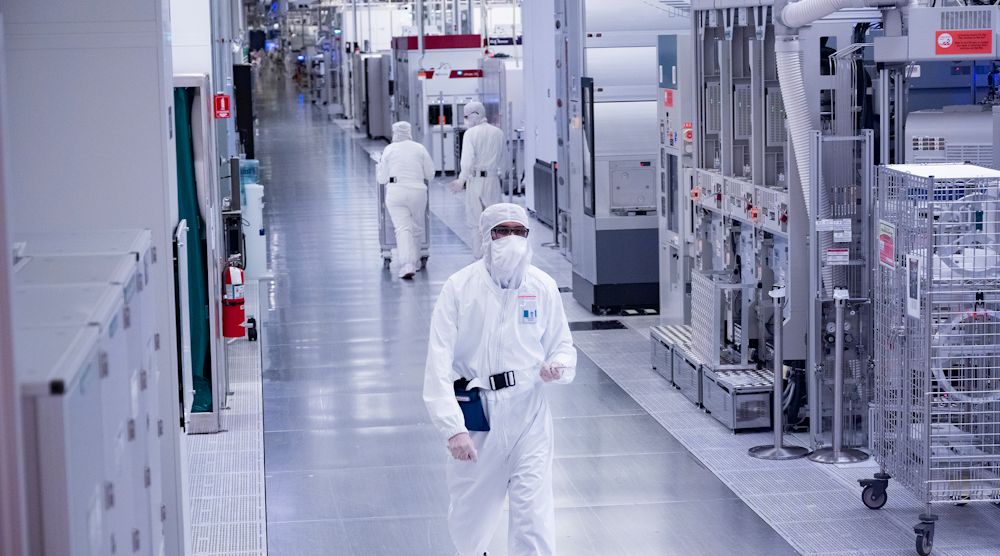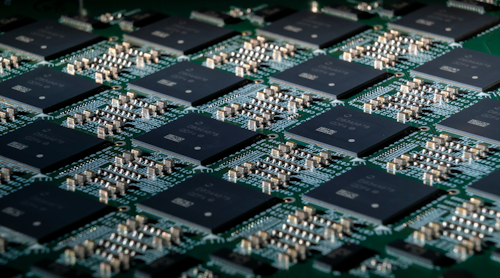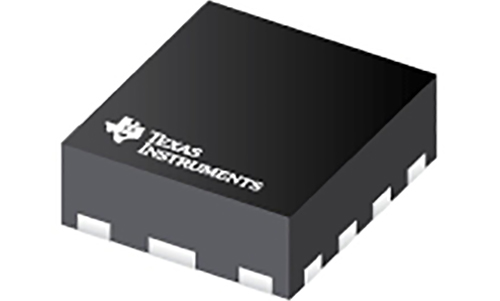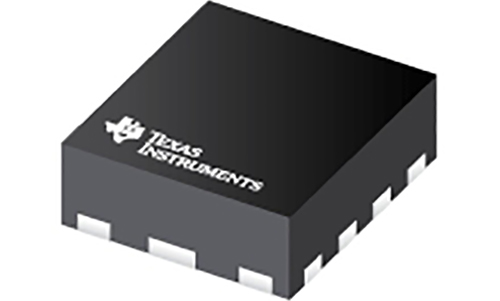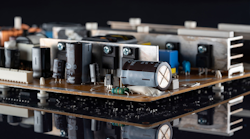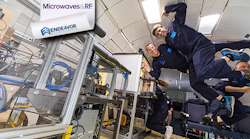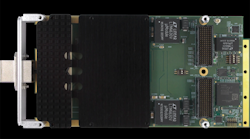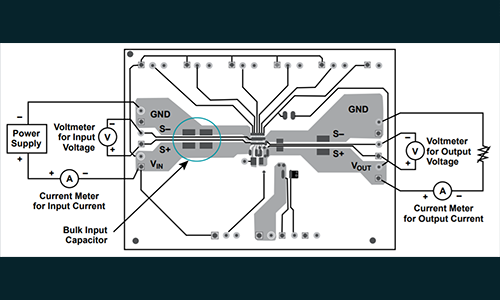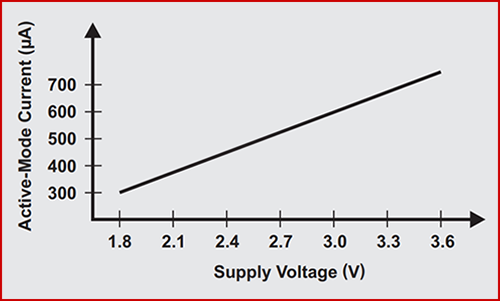Intel said it plans to invest at least $20 billion in new production capacity in Ohio, the first phase of a project that could transform the site into one of the largest chip manufacturing facilities in the world.
The Santa Clara, California-based company said it will build two new cutting-edge chip factories outside of Columbus, Ohio, in a move to expand its manufacturing capacity both for internal use and foundry clients. To handle the soaring demand for advanced chips, Intel said the site could eventually grow to accommodate eight fabs with an investment of as much as $100 billion over a 10-year period.
Intel said the fabs would churn out chips based on “the industry’s most advanced transistor technologies” at the new site. Planning for the first two factories will start immediately, Intel said, with construction slated to begin late in 2022. Production is expected to come online in 2025.
“A New Epicenter”
Intel said the sprawling operation will occupy 1,000 acres, with the potential to double it to 2,000 acres to accommodate additional fabs and create room for support operations, suppliers, and ecosystem partners.
The move will give a boost to Intel’s U.S. manufacturing capacity. Ohio will be home to the company's first new U.S. manufacturing site in around 40 years, giving Intel’s operations more geographic diversity at a time of supply chain challenges around the world. The new location will complement its Oregon and Arizona sites, where it rolls out its most advanced processors for personal computers and data centers.
“Today’s investment marks another significant way Intel is leading the effort to restore U.S. semiconductor manufacturing leadership,” said Intel CEO Pat Gelsinger, who returned to the Silicon Valley titan a year ago. “Intel’s actions will help build a more resilient supply chain and ensure reliable access to advanced semiconductors for years to come.”
"These factories will create a new epicenter for advanced chipmaking in the U.S.," he said in a statement ahead of a press conference at the White House with President Joe Biden and Commerce Secretary Gina Raimondo.
The company said the $20 billion project is the largest private sector investment ever made in the state of Ohio.
Presidential Seal (of Approval)
白宫被英特尔的投资计划another step in reviving advanced chip production in the U.S. As the chip shortage drags into its second year, the U.S. has become more motivated to secure chip supplies that are vital to the economy. Today, the vast majority of the world's chips are manufactured in Asia, and Biden and other officials have become wary of the country's over-dependence on chip imports.
The lack of US production capacity has also limited the US government’s ability to react to the supply chain crisis, which has snagged the production of cars and even consumer devices, including game consoles and smartphones. The pandemic “shined a spotlight on the fragility in the global semiconductor supply chain,” the White House said in a statement.
At the press conference, President Biden reiterated his commitment to help U.S. regain its ability to manufacture chips critical to everything from cars and smartphones to vacuum cleaners.
“Here's the deal: America invented these chips. America invented these chips and federal research and development led to the creation of these chips,” he said.
With or Without You
For Intel, the announcement fits into the broader strategy under Gelsinger’s leadership. Intel has stumbled in recent years, falling behind rivals in designing the most advanced chips and fabricating them, shaking its dominance of the chip sector for the first time in years. He is trying to return Intel to its former self by restoring its manufacturing prowess after losing it to TSMC, the world’s largest contract chip foundry.
In 2020, Nvidia overtook Intel as the most valuable semiconductor firm in the U.S., and Apple announced its plan to purge Intel’s chips from its Mac computers and create faster, more energy-efficient chips in-house.
As part of the effort, Intel has pledged to spend tens of billions of dollars to boost its production capacity, both for its own needs as well as to make available to outsiders, and even rivals such as Qualcomm. It has pledged more than $100 billion in planned investment in the last year as part of its high-risk recovery plan. The strategy is called "IDM 2.0" because it builds on Intel’s integrated device manufacturing model.
Last year, Intel announced it is investing $20 billion in three production plants located in Arizona, and it also said it would allocate up to $95 billion to bolster its production capacity in Europe.
The new facilities are projected to create 3,000 permanent jobs at the new Ohio site. The project is expected to create an additional 7,000 construction jobs and tens of thousands of additional support jobs, the company said.
With the announcement, Intel is also trying to get some political goodwill as it pushes for the CHIPS Act, a proposal that would feed $52 billion in federal subsidies to companies that build chip factories in the U.S.
Intel executives said it will invest in its turnaround with or without federal aid. But it is counting on U.S. subsidies to help pay for state-of-the-art factories, which can cost more than $10 billion apiece. As Keyvan Esfarjani, Intel's senior vice president of manufacturing, supply chain, and operations, warned: "The scope and pace of Intel’s expansion in Ohio, however, will depend heavily on funding from the CHIPS Act.”
Silicon Rush
Unprecedented demand for chips has spurred companies to invest aggressively in new production capacity in the US—and around the world, wherever it is needed. Semiconductor companies are also being lured in by the prospect of massive subsidies and other incentives proposed by U.S. politicians.
TSMC plans to spend a record $100 billion over three years to boost its production capacity and address a chip drought that has forced auto makers to idle factories and hiked prices on consumer devices. TSMC, which has already started building a $12-billion fab in Phoenix, Arizona, that will manufacture 5-nm chips, has said it is trying to prepare for the future, as it sees a permanent increase in underlying chip demand.
Last year, Samsung said it is giving priority to chips in a more than $205 billion capital spending budget over the next three years, and it also announced that it would build a $17 billion fab outside Austin, Texas.
Texas Instruments said last year it plans to start building a new 300-millimeter fab north of Dallas, Texas to tap into a global boom that pushed the semiconductor industry in 2021 to more than $500 billion in annual sales.
Industry officials have said the chip drought could last into late 2022 and possibly 2023. The supply chain challenges are highlighting the need for a boost in production worldwide as well as in the U.S.
“Most semiconductors today are sourced overseas. As a country, we cannot rely solely on imports for such essential technology,” Gelsinger said. “The only way to address this economic security risk is to increase our domestic semiconductor manufacturing capacity.”
The White House said since early last year, chip companies have announced about $80 billion in new U.S.-focused spending through 2025, citing data from the Semiconductor Industry Association, a trade group.
Made-in-America Again
To win over companies willing to locate fabs in the US and reduce the chances of another shortage similar to the one the world is experiencing now, the US government is putting together a massive incentive package in the form of the CHIPS Act.
共和党和民主党是美国德西re to repatriate US semiconductor production. They are also watching out for China, which is spending a fortune to boost its self-sufficiency in chips. The US today only accounts for slightly more than 10% of global chip output. Industry officials say chip firms have been lured out of the country by a range of factors, such as access to cheaper labor and larger subsidies.
But while the U.S. Senate approved the CHIPS Act last year, the funding has been stalled for months in the House of Representatives.
President Biden, who is facing political pressure over supply-chain crunch and rising prices for consumers buying cars and other goods, urged Congress to approve the U.S. Innovation and Competition Act, which, if it is approved by Congress, would include funding for the CHIPS Act. He said that funding for the industry is vital to sustain America’s technology leadership and keep China’s chip ambitions in check.
“I want other cities and states to be able to make announcements like the one being made here today,” Biden said. “And that’s why I want to see Congress pass this bill right away and get it to my desk.”
“A Silicon Heartland”
Gelsinger called the new Ohio site the “catalyst for a Silicon Heartland.” The region landed Intel’s latest investment in part because of its pipeline of top talent from universities in the area, robust infrastructure, and access to a space with enough room for expansion, executives said. To win over Intel, Ohio agreed to invest $1 billion in infrastructure upgrades and extend tax credits linked to job creation for up to 30 years.
“A semiconductor factory is not like other factories,” Gelsinger said. “It's more like a small city, supporting a vibrant community of services, suppliers, and ancillary businesses. You can think about this as a magnet for the entire tech industry."
The new Ohio complex will prompt many of its ecosystem partners and suppliers to build a presence in the region. Intel said several of its equipment vendors and materials suppliers, including Air Products, Applied Materials, Ultra Clean Technology, and Lam Research, have already pledged to build out a physical presence in the region to support Intel’s sprawling operations.
To complement its Ohio investment, Intel also pledged to invest $100 million in activities with educational institutions to build a pipeline of skilled workers to run the fabs and support research in the region.
In addition to providing capacity for Intel’s leading-edge products, executives said the new facility will support rising demand for the company’s made-to-order chip business—Intel Foundry Services (IFS).
Randhir Thakur, senior vice president in charge of Intel’s foundry arm, said the fabs would support its most advanced technology nodes, including the “18A” node it has previously said would put it on top of rivals by 2025. “Intel is opening its factory doors wide to serve the needs of foundry customers around the globe–many of whom are looking for more geographical balance in the semiconductor supply chain."
The fabs will also "provide leading-edge process technology to support the U.S. government’s unique security and infrastructure needs.”

